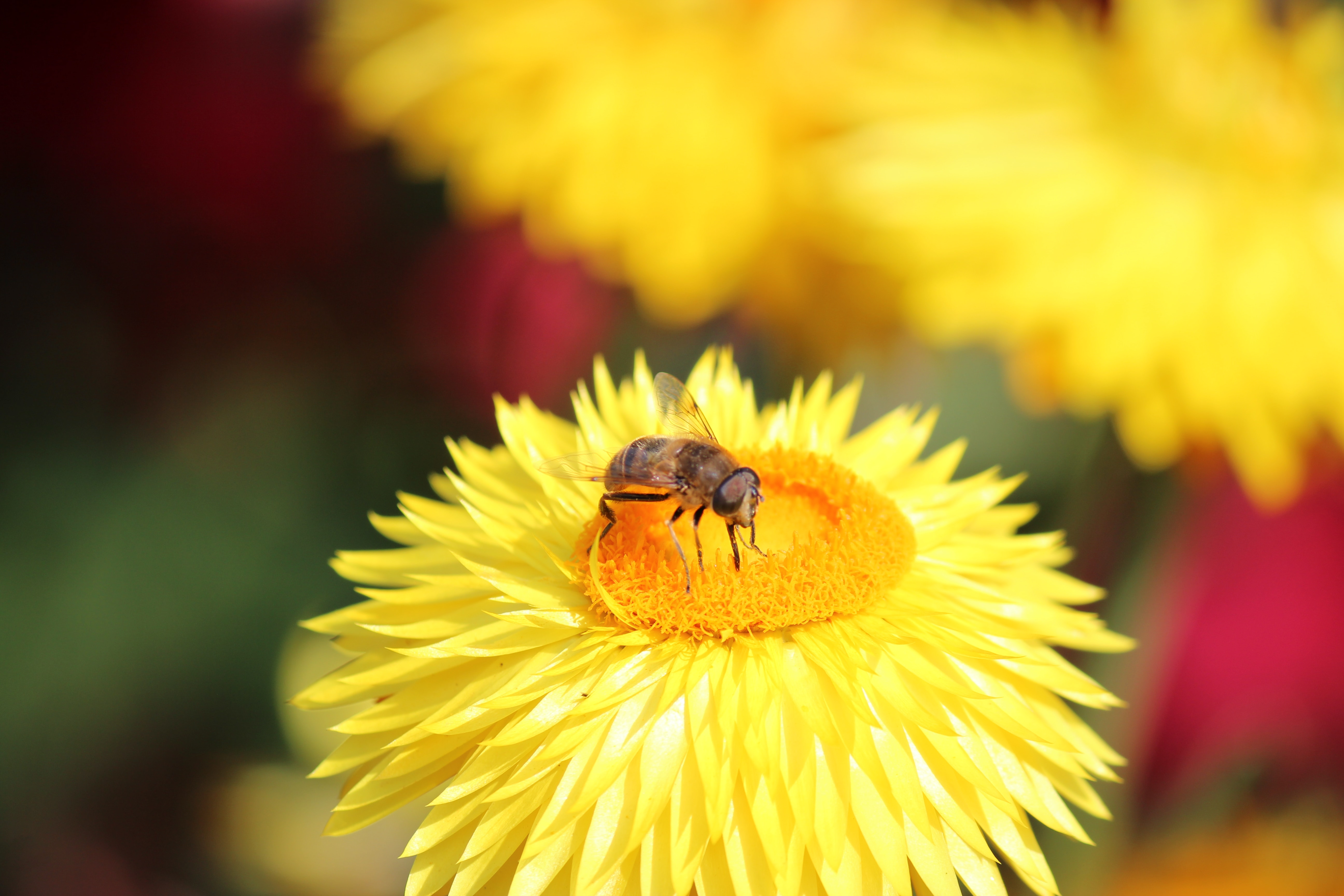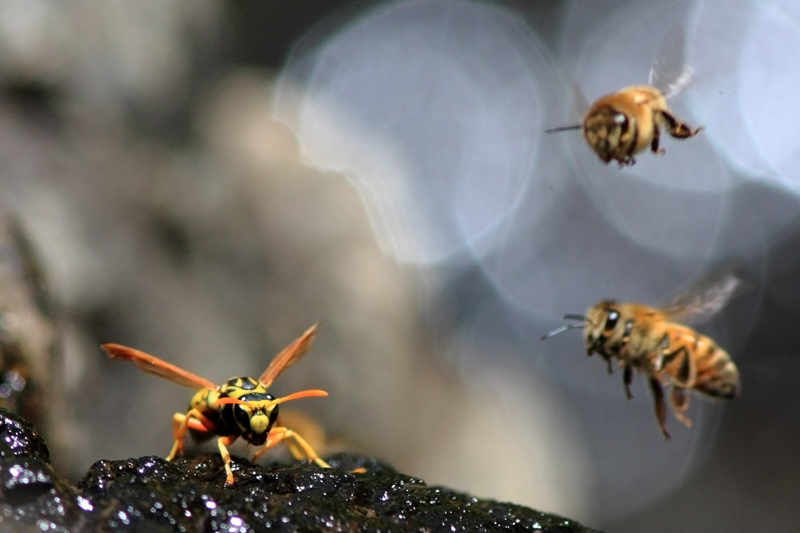As we all know, honeybees bounce from flower to flower collecting nectar. As they do this, pollen also collects into little clumps on their hind legs. These clumps are sealed with a mix of saliva and honey, or nectar, and brought back to the hive and packed into the combs as a food source, creating the small granules we know as bee pollen!

When bees enter the hive and pass through a screen that gently scrapes their hind legs, the pollen gets collected. Think of it as a welcome mat at the hive for the bees to wipe their pollen-filled feet on.
And, now for the best part – those bee secretions create a fermentation process that makes the nutrients of the flower pollen more readily available and gives bee pollen the nutritional density it’s known for… Pretty cool, right?
In short - bee pollen is the main source of healthy fats, proteins, and nutrition for nurse bees, baby bees, and drone bees. studies have shown that bee pollen contains over 250 biologically active substances, including proteins, carbs, lipids, fatty acids, vitamins, minerals, enzymes, and antioxidants, and is approximately 35% pure protein by composition.
Because the pollen grains are collected from many different types of plants, bee pollen varies in shape, color, and nutritional content. although bees normally collect pollen from just one type of plant at a time, sometimes they will gather it from many different flowers.
Benefits of bee pollen
Let’s dive into some of the other health benefits bee pollen is known to have:
· Nutrients: bee pollen is known to contain the essential macro-nutrients: healthy fats, proteins, and carbohydrates. it also contains trace minerals, vitamins, enzymes, and amino acids.
· Antioxidants: certain chemicals present in the body called “free radicals” can cause cancer and type 2 diabetes. Bee pollen contains significant amounts of antioxidant substances that help counteract these free radicals.
· Possible protection against liver damage: one 2013 study showed bee pollen helpful in healing liver damage in rats under specific research circumstances.
· Anti-inflammatory properties: allergies are caused by inflammation, and consuming local pollen may help with mitigating the effects of seasonal allergies. bee pollen has also been shown to help reduce general inflammation and some specific genetic mutations.
· Immune boosting: vitamin a is an important part of the immune system firing on all cylinders, and a single serving of bee pollen can provide 51% of the recommended percent daily value. it’s also been found antimicrobial, antifungal, and potent antioxidant, so much so that it is considered a functional food.
· Energy-boosting: not only does bee pollen contain all the essential amino acids, but those amino acids are free-form, meaning they are easily absorbed by the body and ready to be put to work – your work.
· Possible relief for breast cancer patients: one small 2015 study showed that pollen can reduce hot flashes, night sweats, and other symptoms experienced by breast cancer patients during treatment.
· Wound healing: a 2016 scientific study showed an ointment made from bee pollen was helpful in promoting healing from burns.
· Possible risk-reduction for heart disease factors: studies have shown that bee pollen extract can reduce specific symptoms, such as high blood lipids, lipid oxidation, and cholesterol, specifically “bad” cholesterol.
Nutritional breakdown of bee pollen
1 tbsp. of bee pollen: Macronutrients
· 40 calories
· 0g fat
· 7g carbohydrates
· 4g sugar
· 1g fibre
· 2g protein
Micronutrients
· Vitamin C

How to eat bee pollen
If it’s your first time eating bee pollen, it’s recommended that you start with a very small dose and you work your way up from there. this is to ensure that there is no allergic reaction and your body can tolerate it.
Always, always check with your individual health practitioner or GP before adding any supplements or possible allergenic foods to your diet.
1. place one bee pollen granule under your tongue
2. wait for it to dissolve completely.
3. if you experience no reactions, you can increase your daily dosage by a few granules per day for about a month. After a month, you should feel confident to consume bee pollen in all kinds of ways (see below).
Since bee pollen has a relatively neutral taste, bee pollen works in almost anything! You can use it as a topping on cereal or a yogurt parfait with fresh berries or mix it into a hearty bowl of oatmeal. You can also use it as a crunchy topping on salads, toast, poke bowls, or buddha bowls! Or, if you’re really looking to maximize its restorative effects, blend it in a protein shake or smoothie.
How and where to buy bee pollen
When looking to buy bee pollen is extremely important to know the source. Locally harvested using specialized pollen traps and supporting locals is always encouraged!
Here are my recommendations for those in the GTA:
· Dutchman’s Gold – Hamilton, ON
· Wild Country – Ontario, Quebec, Alberta + BC
· The Gut Lab – Canadian
_____________
Sources:
